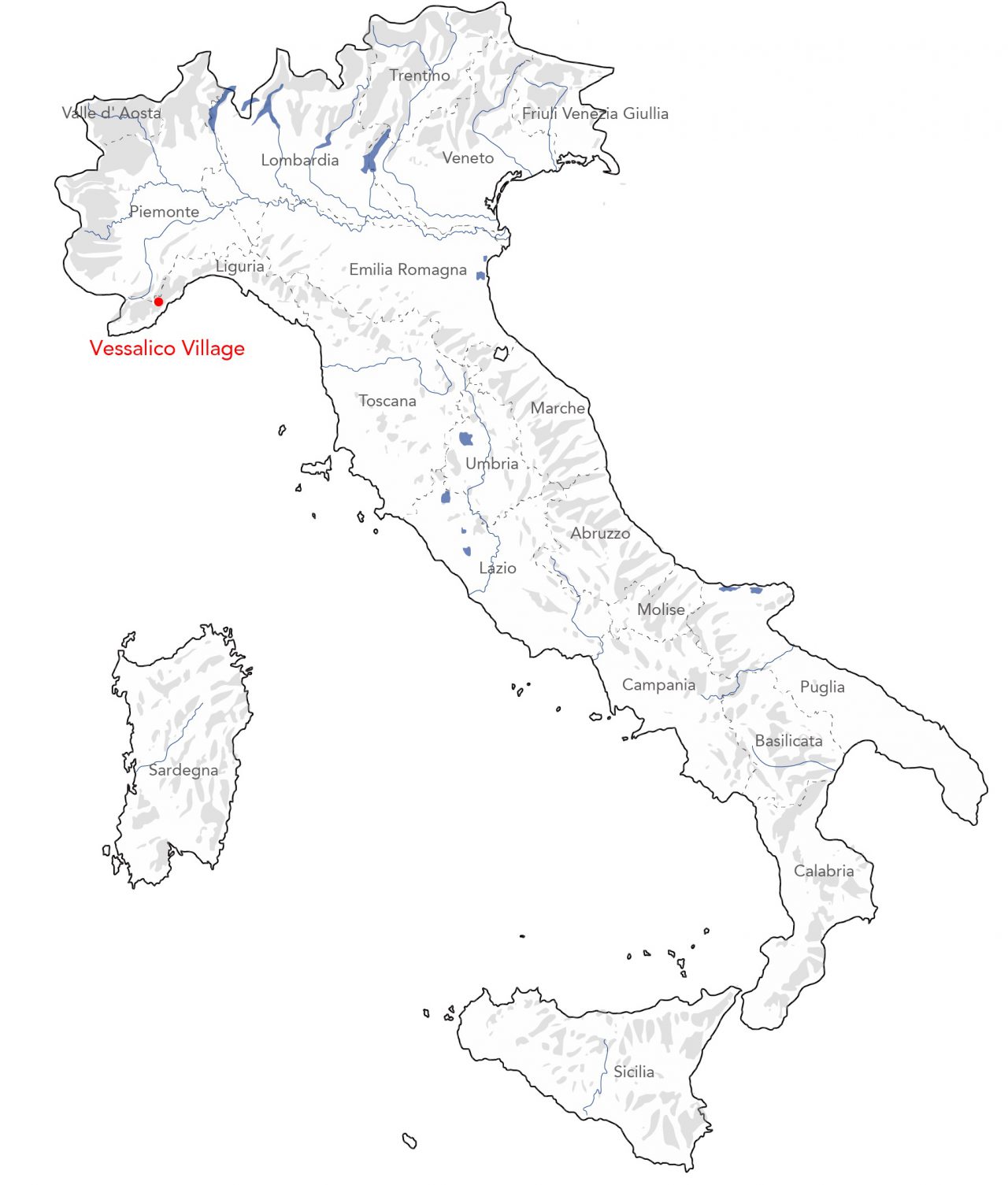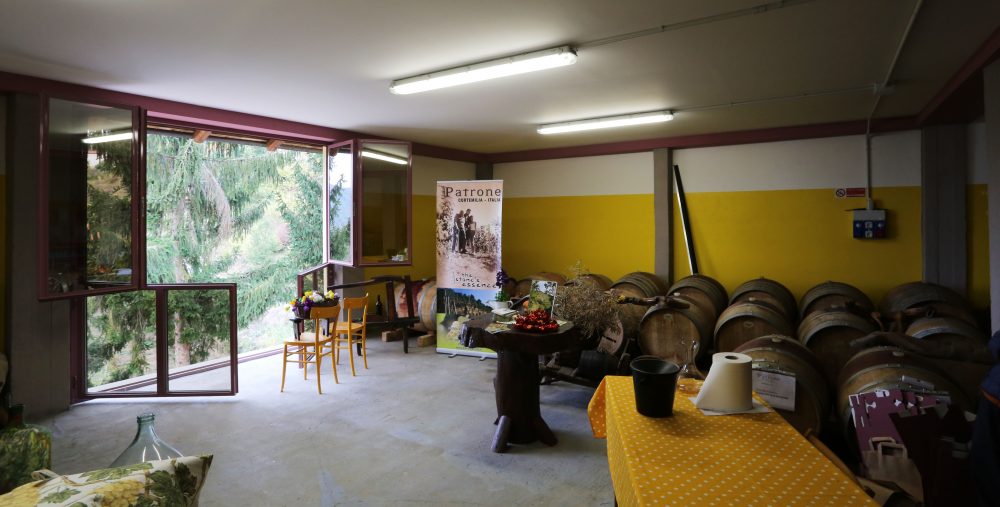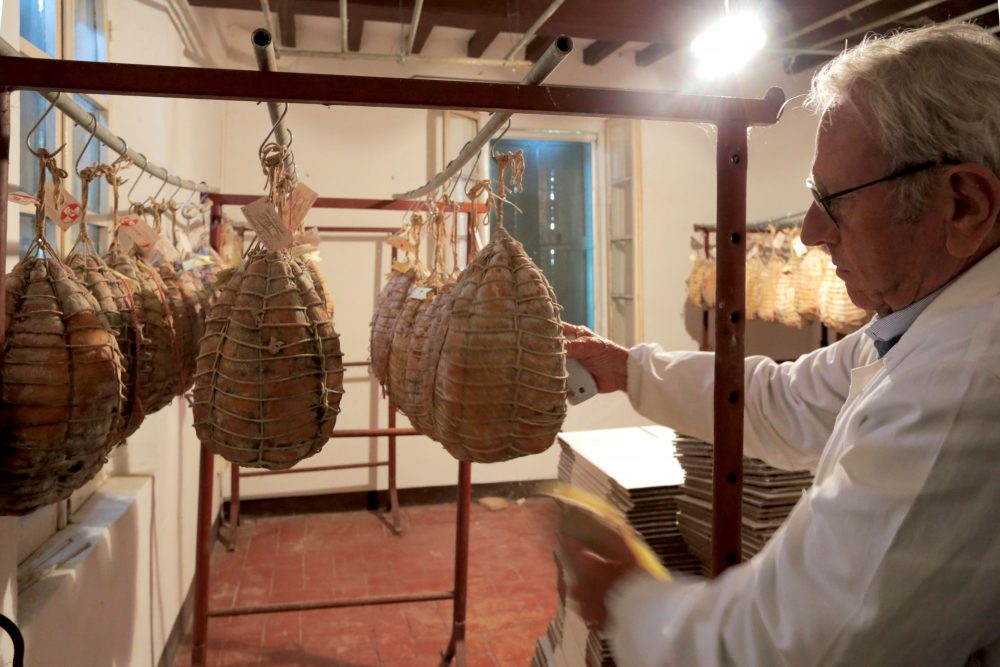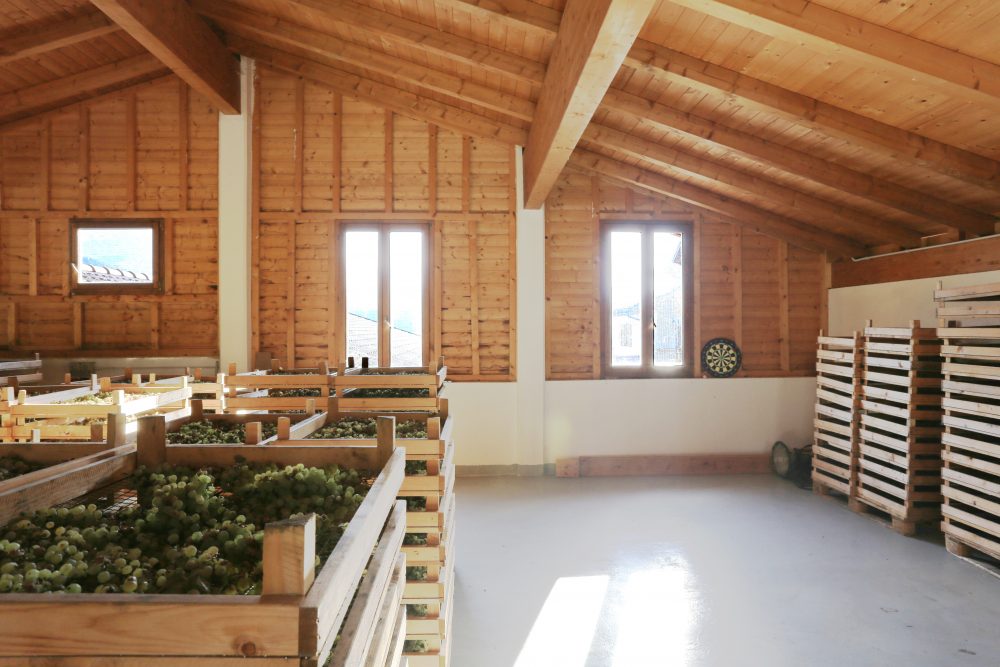
Garlic Window in Vessalico village
19 Jun 2018
- Keywords
- Architecture
- Columns
- Essays
Lemon raised under the shining sun; cured ham aged in a rich flavor by growing mold; wine made from grapes raised under well-ventilated pergola. We can see architectures particular to each region within these charming food production scenes. Surely, Italian food is born from the relations between architecture and local climates and geography.
With this in mind, I spent a year from February 2016 in Italy researching food and architecture. The subjects of this investigation were groups producing traditional foods protected by Slow Food.
The Slow Food movement was started by Carlo Petrini, a journalist of wine and food, who feared that the Italian food culture would be lost after a McDonald’s opened in “Piazza di Spagna” in Rome in 1986. In the first page of his book, Petrini explains that because gastronomes (gourmets) have sharpened sensitivity and good taste, they are able to consider how food is made. Slow Food is concerned that traditional and regional foods are being lost due to the rise of fast food and globalization. They are therefore protecting traditional and regional foods by marking them with the Slow Food logo and distributing them to markets, as well as creating networks between producers, cooks and consumers.
The wines, cheeses, cured hams, fruits and vegetables that I researched are all registered with Slow Food, and are produced through the utilization of the natural conditions of local climates and geographies—light, heat, wind, humidity, etc. In this series, I want to trace the relationships between the taste of traditional foods registered with Slow Food and the window as an architectural element that utilizes the natural environment around us.
In this article, I will introduce the window related to the production of garlic in Vessalico village located in the north of Italy.
Vessalico is a small mountain village of about 300, which runs west from Genova along Liguria Bay and to the north about 25 km from Imperia. The village is surrounded by small mountains at an altitude of 300 – 600 m, so the climate is mild, and even in winter the temperature falls below zero only about one or two times in the season.
-
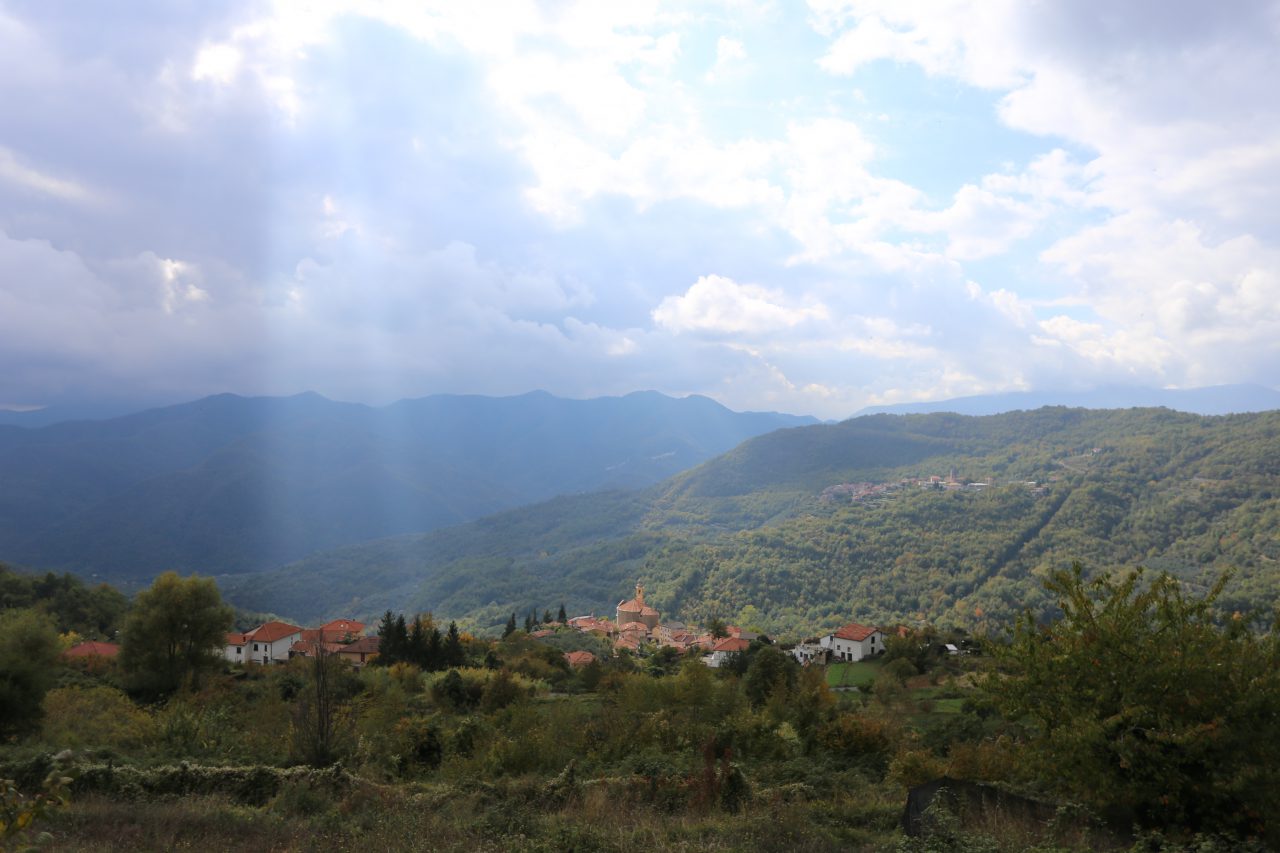
Vessalico Village between mountains
The cultivation of garlic in this region became widespread as early as 1760, having been described in old Genovan documents. A detailed history, however, is unknown. The main product of the village in Vessalico at the time was garlic, but at one point there were as few as only two or three farmers. It is said that the number of producers has gradually increased since its registration with Slow Food in the 2000s and the traditional production method was handed down to younger generations.
-
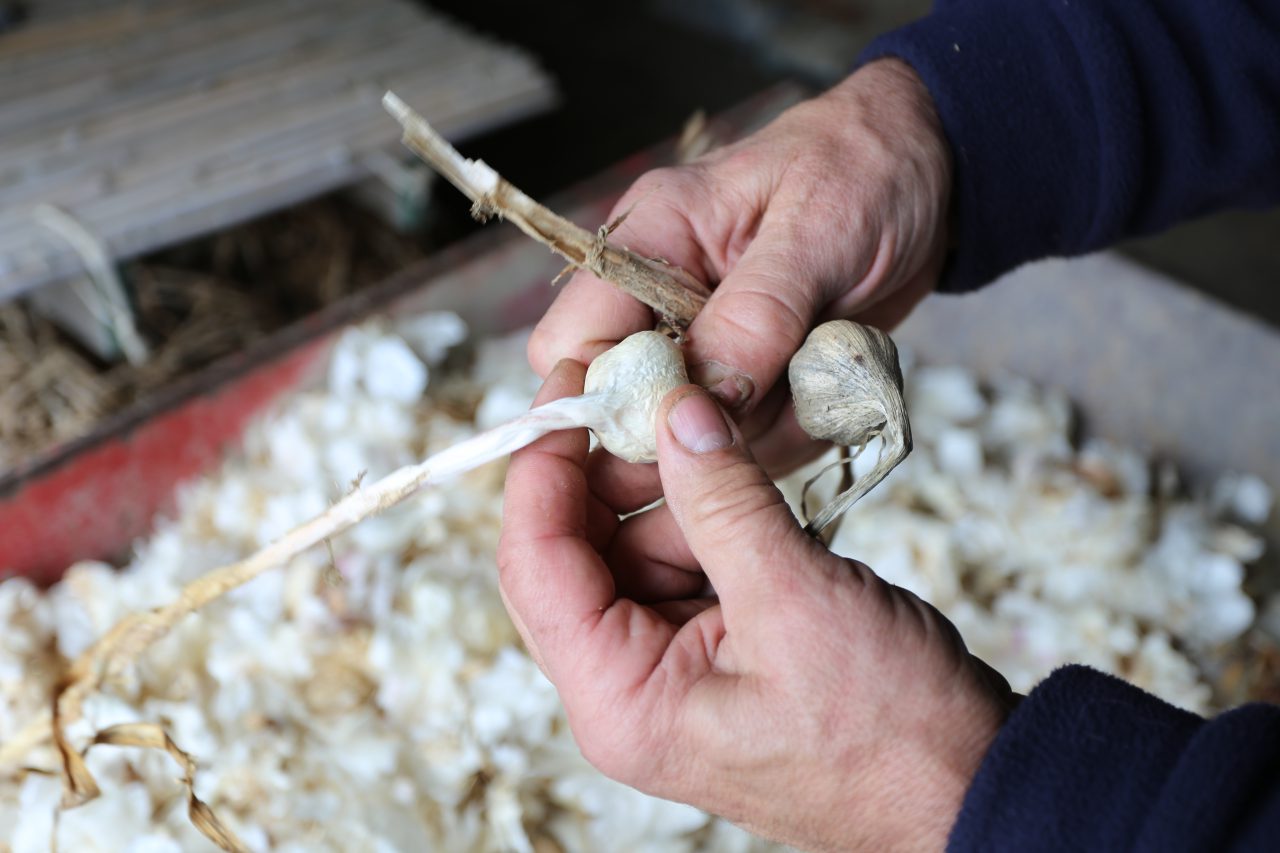
Garlic of Vessalico Village
It is said that the number of producers has gradually increased since its registration with Slow Food in the 2000s and the traditional production method was handed down to younger generations. The garlic in Vessalico is characterized by a spicy taste and richer flavor the garlic from other areas. Aiè, which is mayonnaise made of egg and olive oil, is a traditional food with bread.
Addresses and contacts of producers of food registered in Slow Food are published on the Internet. With this information, I went to investigate the garlic production of Roberto Marini, who has been growing garlic for many years.
-
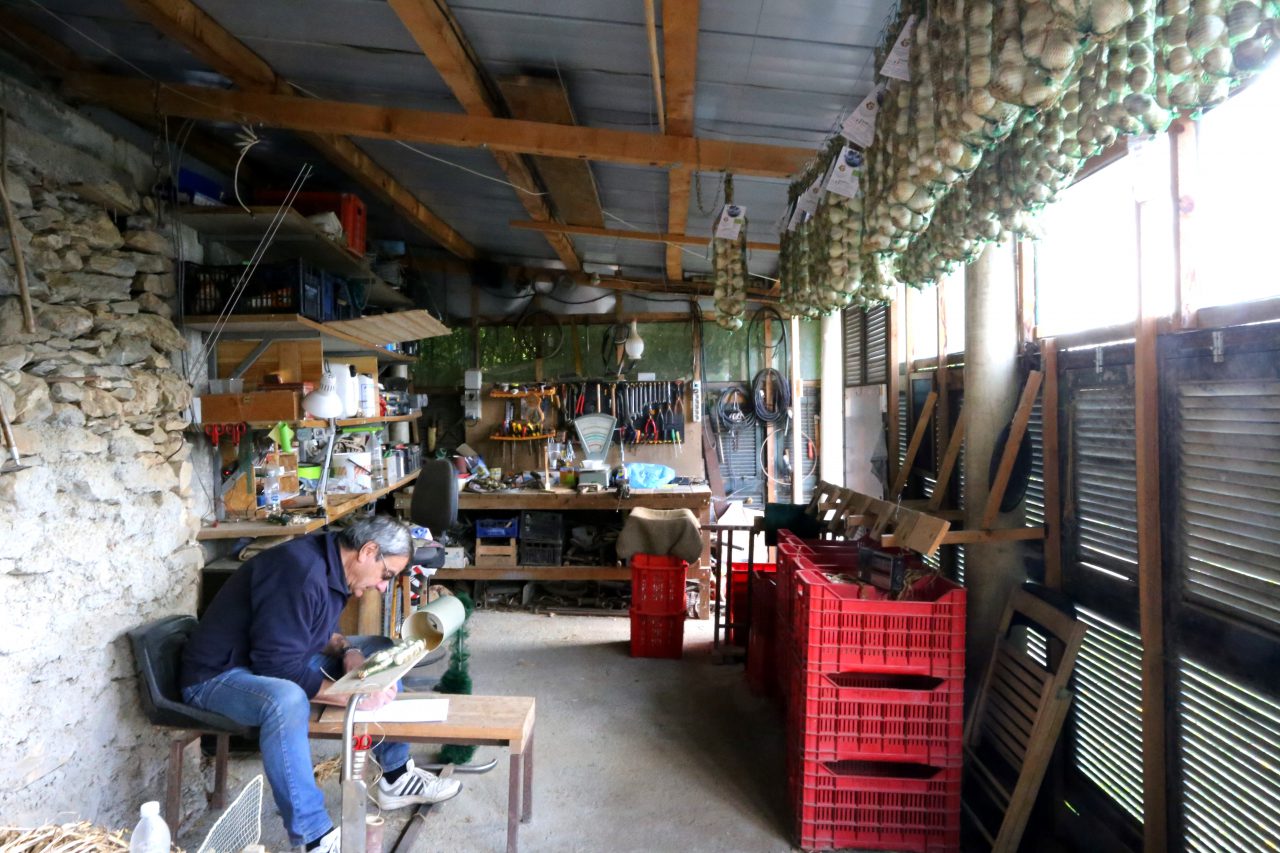
A hut for drying garlic, doubling Roberto’s working place
Garlic is cultivated in a dry climate with well-drained calcareous soil where the roots do not decay, similar to Central Asia, which is regarded as the origin of garlic. Roberto’s farm is situated on a mountain slope oriented south for the sun.The fields are stepped in stone masonry terraces that aid in drainage.
-
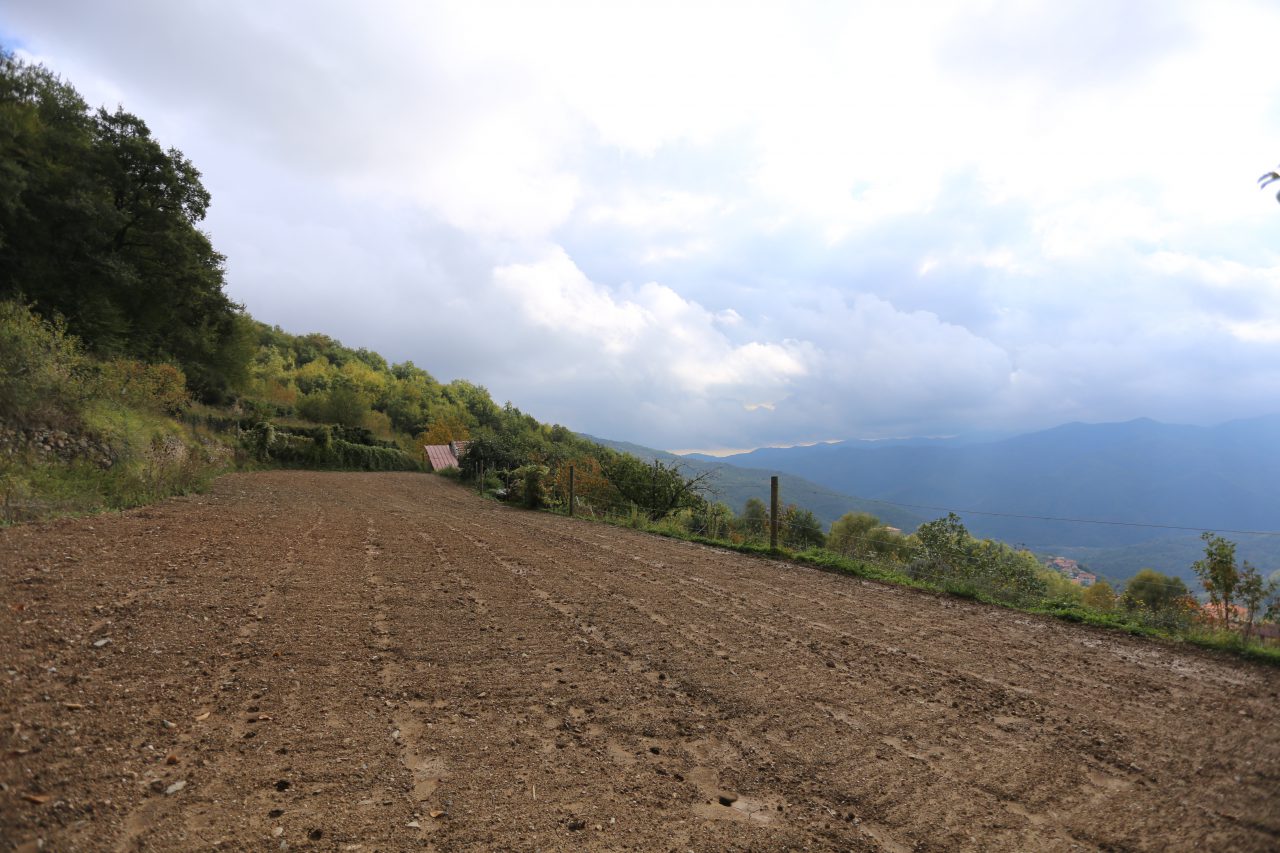
Stone mansonry terrace of calcareous soil
The garlic bulbs are separated one by one for seeding. After planting in October, the buds appear in the beginning of January. Stems gradually grow from about March when the sun gets stronger. The leaves grow rapidly and the underground bulbs enlarge after summer. When the leaves turn yellow and bent, the garlic is ready to be harvested.
In addition to the cultivation of garlic in this region, vegetables such as potatoes and peas are planted once every two years in order to balance the nutrients in the soil. This helps to improve the quantity and quality of the garlic harvested.
-
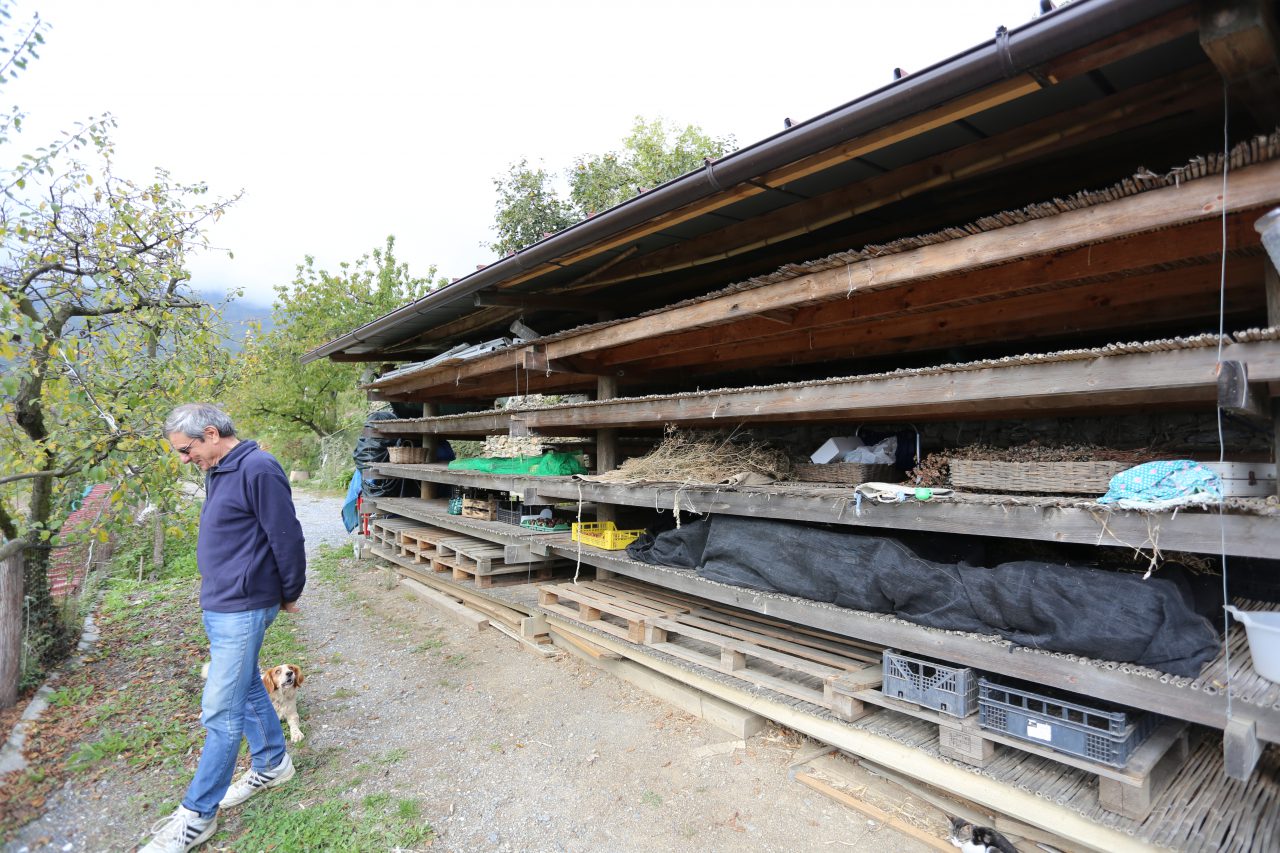
A wooden shelf with eaves for first time drying
From June to July, the garlic is dug up and left on the fields to dry for 4-5 days. They are then transported to the barn and spread on shelves to dry in the shade for a month. The shading is created by laying well-ventilated materials like reeds on the wooden shelf.
After that, their outermost skins are peeled off and cleaned. In most other places, their stems, called leaf sheath, are removed, but in Vessalico village they are left on. The garlic bulbs are separated by size.
-
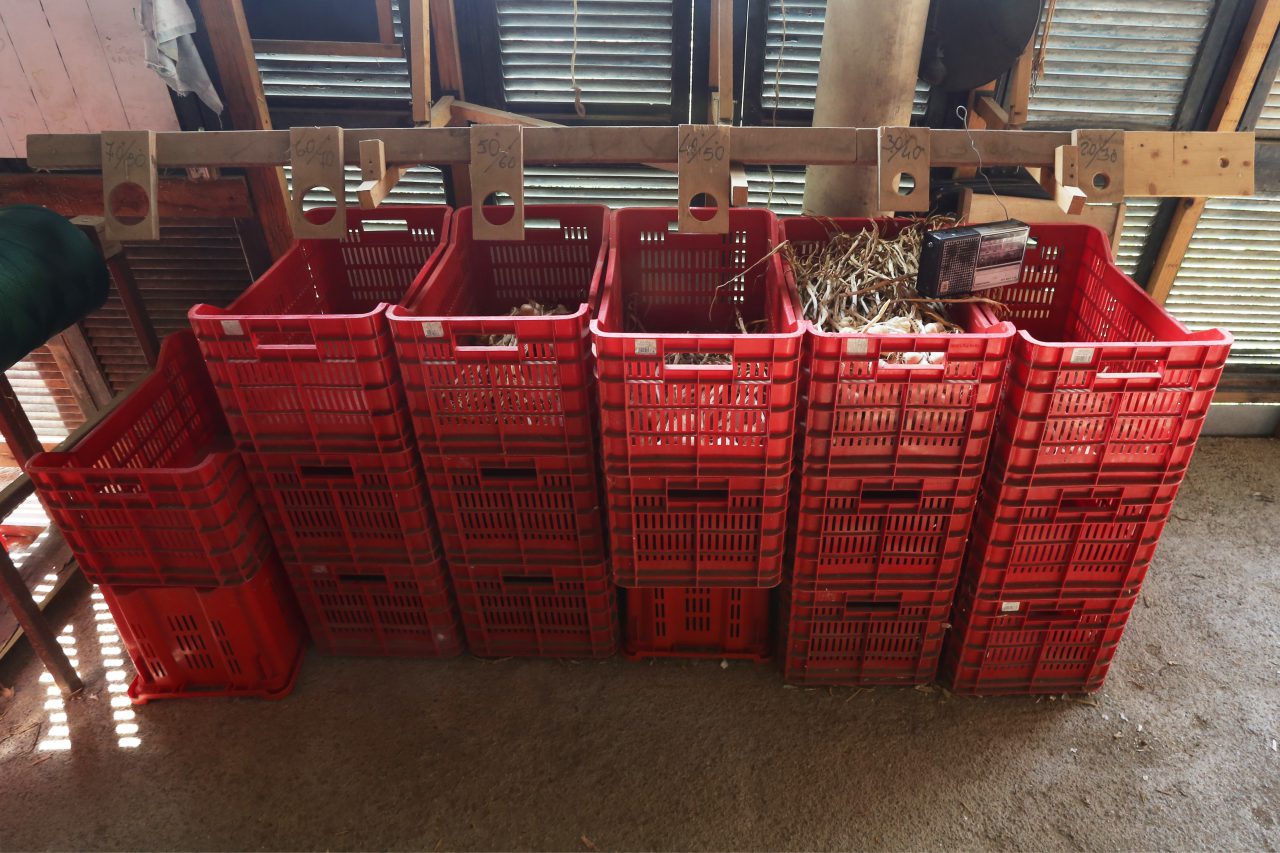
Separating garlics by size
13-15 bulb stems are braided into bundles called “reste.” Shipping garlic in this form is characteristic to Vessalico village. Leaving the stems and braiding the garlic into “reste” makes it difficult for germs inside the bulbs to wake up, enabling the garlic to be preserved for 7-8 months.
Roberto braids the stems at a special desk he made himself. He begins with two or three garlics as a base stem, coiling the rest around one-by-one from the bottom until they are braided into a bundle.
In order to preserve the bundled garlic for a longer period, they are hung by the windows. He said that it is important to continue sending a breeze under the bundle of garlic, not allowing them to become warm and humid.
-
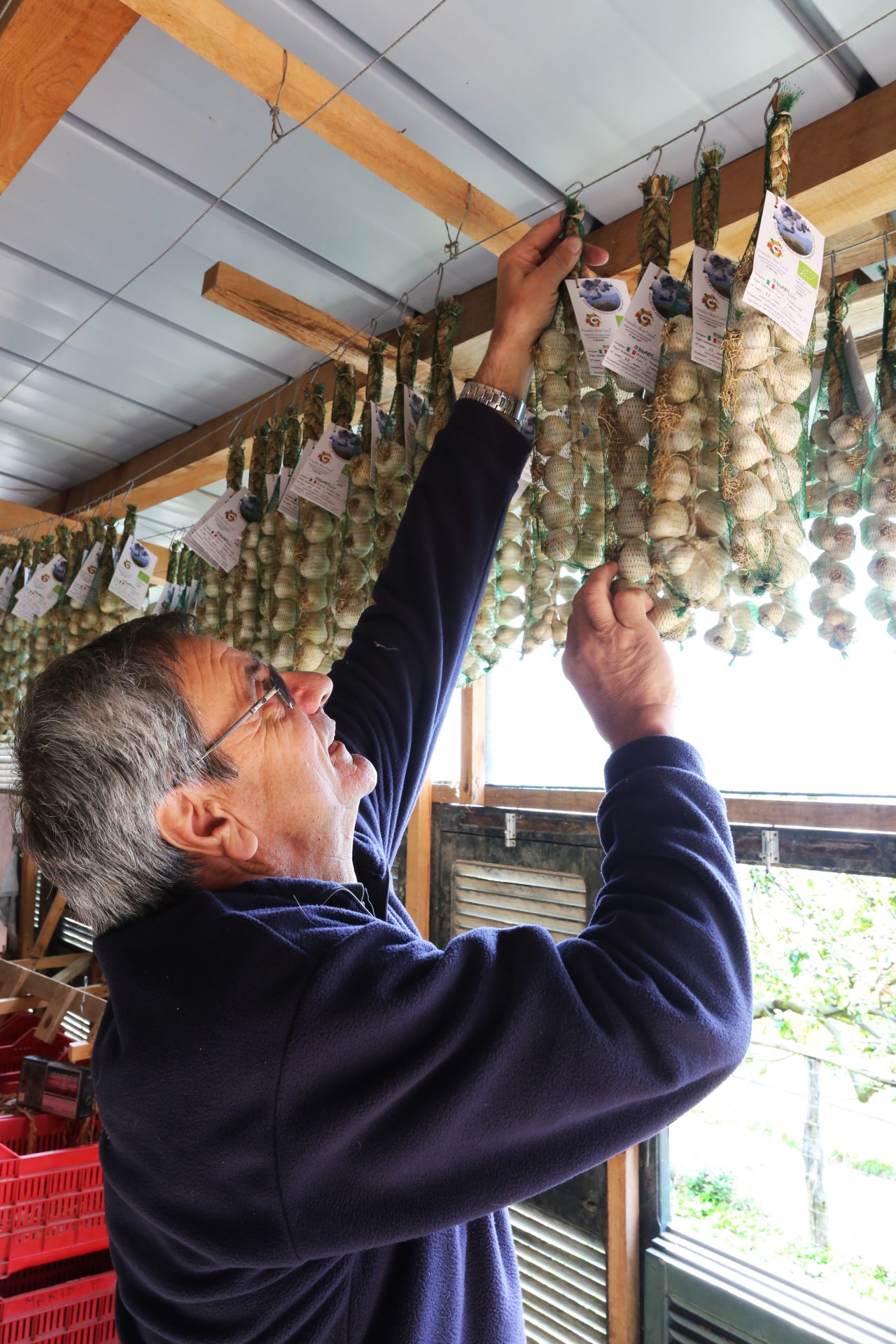
Braided garlics are hung up by the windows
The windows of this hut for drying garlic are interesting, as they are designed taking into consideration the needs of both garlic and people. The bottom window is for ventilation, composed of upper and lower louvers. The upper window consists of continuous fixed glass.
-

The hopper-type louver windows and fixed glass are continued
The hopper-type louver windows allow wind blowing from the Ligurian Sea in the south towards the mountain to enter the hut, preserving the garlic. Because the windows open inward, they can be adjusted to control humidity on hot summer days. The fixed glass windows on top let light in, allowing Roberto to work at the desk sorting and bundling the garlic.
-
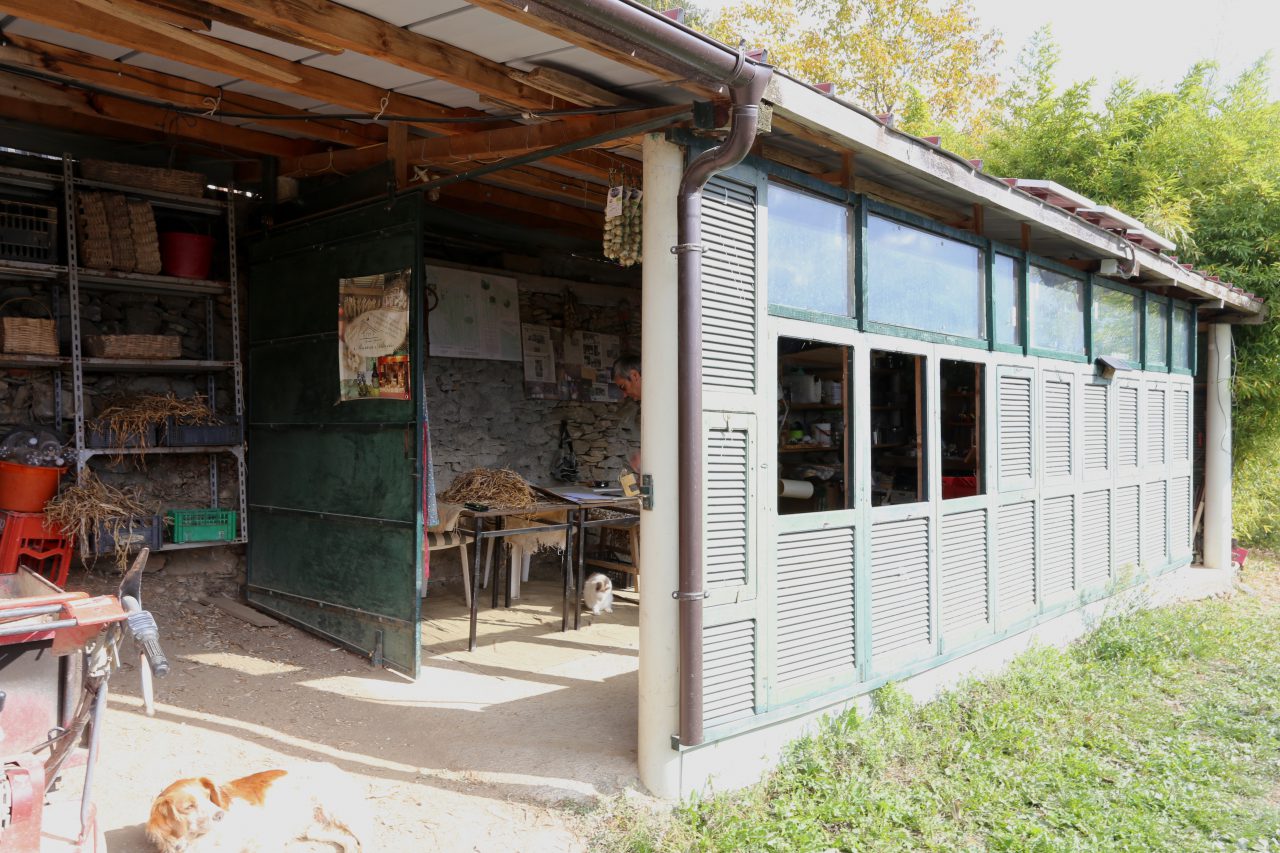
Exterior of a hut for drying garlic
The figure below represents the mechanisms involved in the garlic production process in Vessalico village.
-
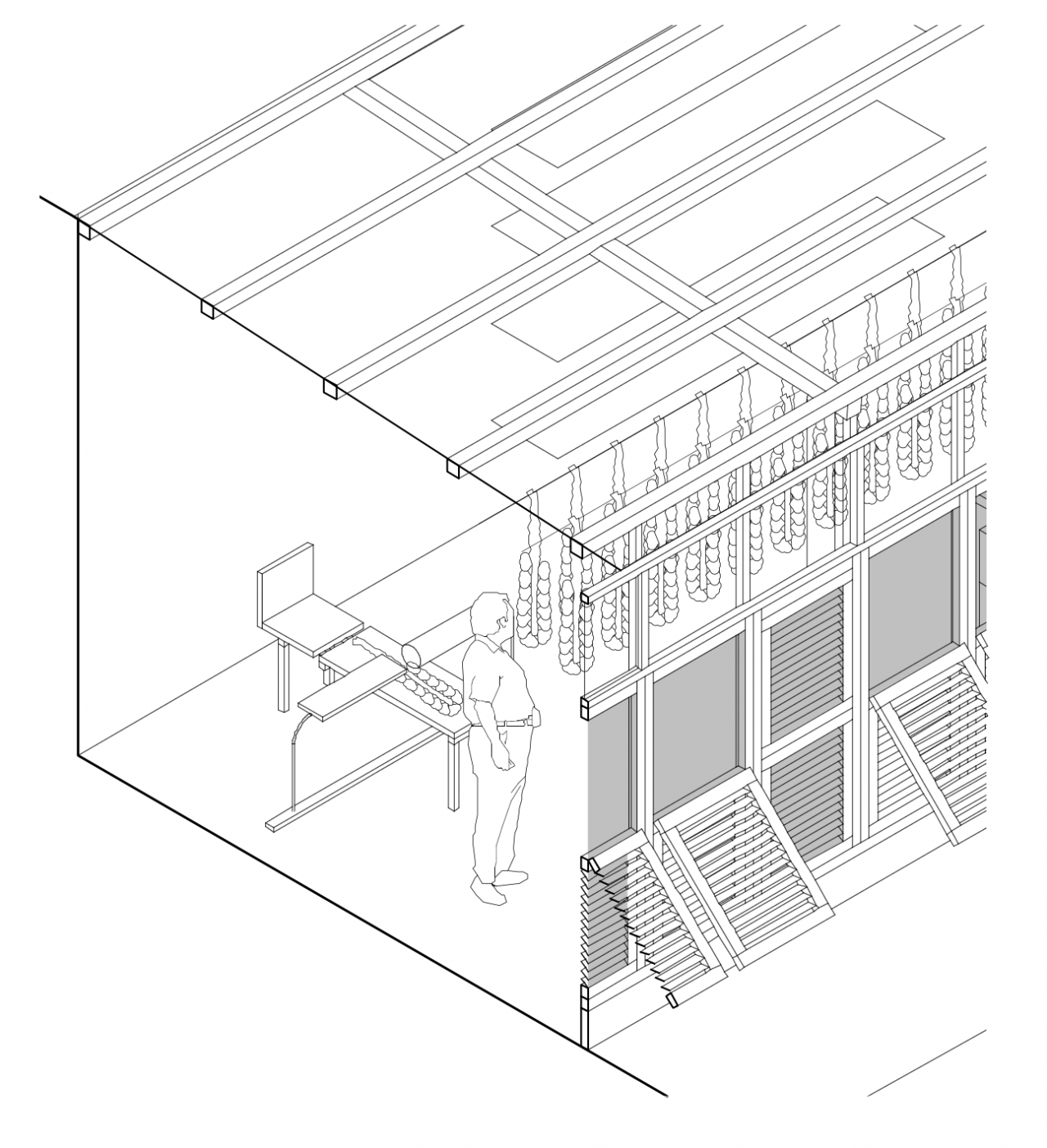
Isometric of a hut for drying garlic
A wooden shelf with eaves is set along the south-facing terraced fields in order to catch sunlight and the breeze from Ligurian sea. A hut for drying garlic bundles is punctuated with hopper-style louver windows that let cooling wind in from below.
Architecture related to food production is placed appropriately with consideration to climate and geographical conditions.
-
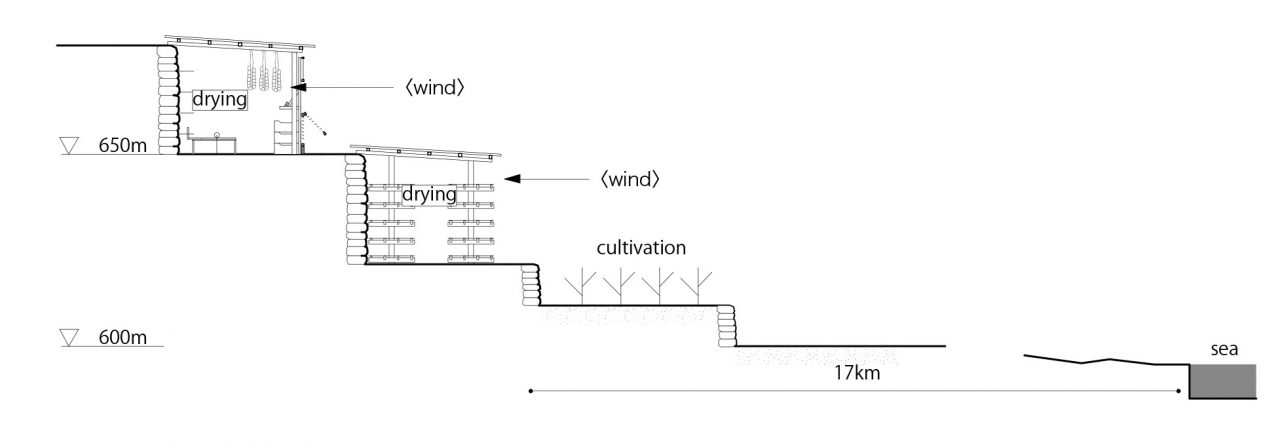
The section for garlic production in Vessalico village
-
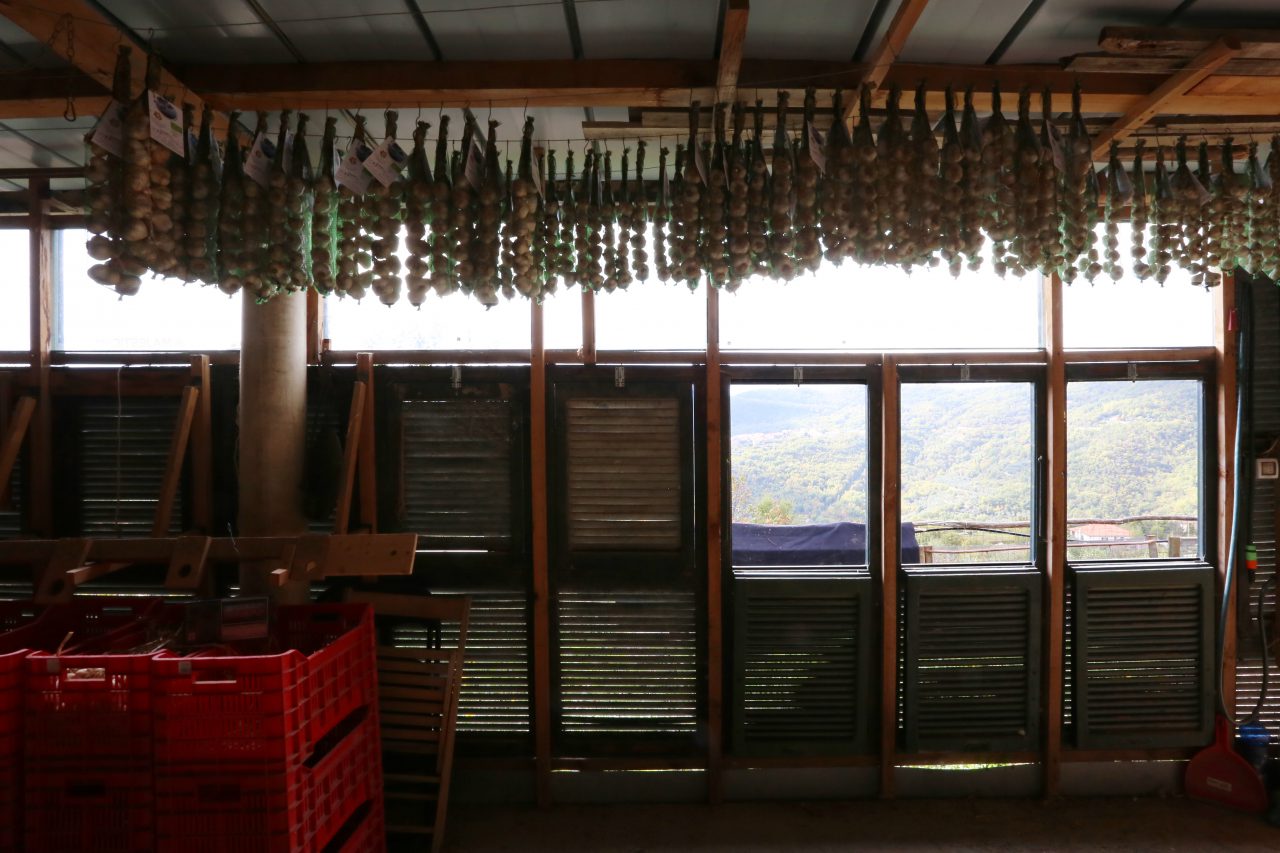
The landscape of drying garlics by the windows
At the same time, the repeated utilization of these types of architectures gives a village a characteristic landscape. Drying garlics by the windows from summer to spring is one of the main landscapes of Vessalico village.
Tomoki Shoda
Born in Chiba Prefecture in 1990. Since his father transferred to many counties, he had lived in many places such as France, Indonesia, China and Belgium. Researched about traditional workshops in Japan for “WindowScape3 -working window” in Yoshiharu Tsukamoto Laboratory at the Tokyo Institute of Technology from 2014 to 2015. Studied abroad in Politecnico di Milano from 2016 to 2017. Researched about Italian Traditional food registered by Slow Food from the perspective of architecture. Graduated master course in Tokyo Institute of Technology in 2017. Researched Japanese Traditional food production as Slow Food Nippon researcher from 2017 to 2018. He has been in Takenaka corporation design team from 2018 to present.

